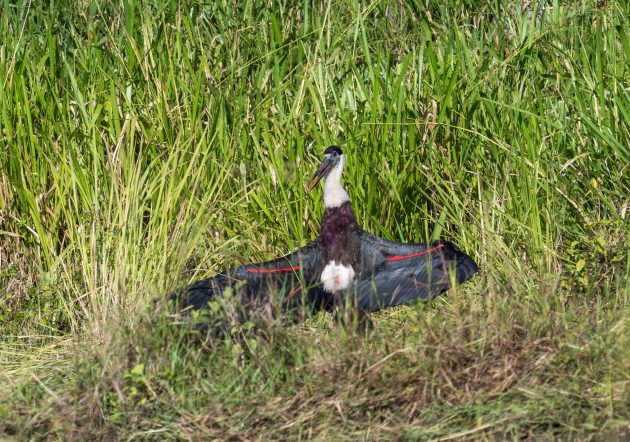PROTECT YOUR DNA WITH QUANTUM TECHNOLOGY
Orgo-Life the new way to the future Advertising by Adpathway Examining wing of Tennessee warbler during banding, Bird Lab at Hays Woods, 16 Sep 2025 (photo by Kate St. John)
Examining wing of Tennessee warbler during banding, Bird Lab at Hays Woods, 16 Sep 2025 (photo by Kate St. John)30 September 2025. Old news but worth a look.
Lots of data is collected when a bird is banded or collected in a museum including species, sex, age, weight, wing and tarsus length. When nearly half a century of this data was analyzed at Powdermill in 2010 and at Chicago’s Field Museum in 2019 it became apparent that very slowly, over a period of nearly half a century, North American birds have been shrinking and in many cases their wings are getting longer.
 Measuring the wing of Lincoln sparrow during banding (photo from Wikimedia Commons)
Measuring the wing of Lincoln sparrow during banding (photo from Wikimedia Commons)The Powdermill and Field Museum studies both found a correlation between size change and the annual mean summer temperature of the species’ breeding range. They reached the same conclusion: As the climate heats up, migratory birds are getting smaller.
What about birds that never migrate?
A similar study in 2021 at the Amazon Biodiversity Center in Brazil analyzed 40 years of data on 77 species and found the same thing. Nearly every non-migratory species became smaller and 1/3 of them had longer wings. Warmer climate was the only known variable at that site.
 Golden-crowned spadebill banding, Amazonian Ecuador (photo from Wikimedia Commons)
Golden-crowned spadebill banding, Amazonian Ecuador (photo from Wikimedia Commons)So many places on Earth are getting warmer, even the Amazon as shown on this temperature anomaly map from 2024.
 Earth’s surface temperature anomaly in 2024, plus graph of the last 48 years of temperature anomalies relative to 20th century average temperature (from NOAA)
Earth’s surface temperature anomaly in 2024, plus graph of the last 48 years of temperature anomalies relative to 20th century average temperature (from NOAA)The birds are shrinking and this is normal. Very slowly, as their home territories heat up, bird bodies are following Bergmann’s Rule regarding body size and temperature.
Bergmann’s Rule: Within a species, populations living in colder climates have larger body size than those in warmer climates. Large animals have a lower surface-area-to-volume ratio so they lose heat more slowly in cold climates. Small animals have a higher surface-to-volume ratio and cool off faster when it’s hot.
To see this side-by-side, check out these song sparrows (Melospiza melodia) in the Carnegie Museum of Natural History’s Section of Birds. Song sparrows collected in Pennsylvania (on the left) are small and in Alaska (right) are large. Southern : warm : small. Northern : cold : large.
 Song sparrow geographic size difference, Pennsylvania on left, Alaska on right from Carnegie Museum of Natural History Collection (photo by Kate St. John, Dec 2016)
Song sparrow geographic size difference, Pennsylvania on left, Alaska on right from Carnegie Museum of Natural History Collection (photo by Kate St. John, Dec 2016)Birds are adapting to climate change generation after generation.























 English (US) ·
English (US) ·  French (CA) ·
French (CA) ·